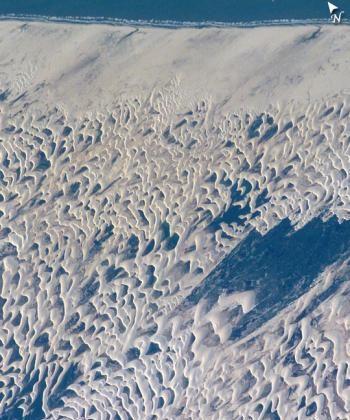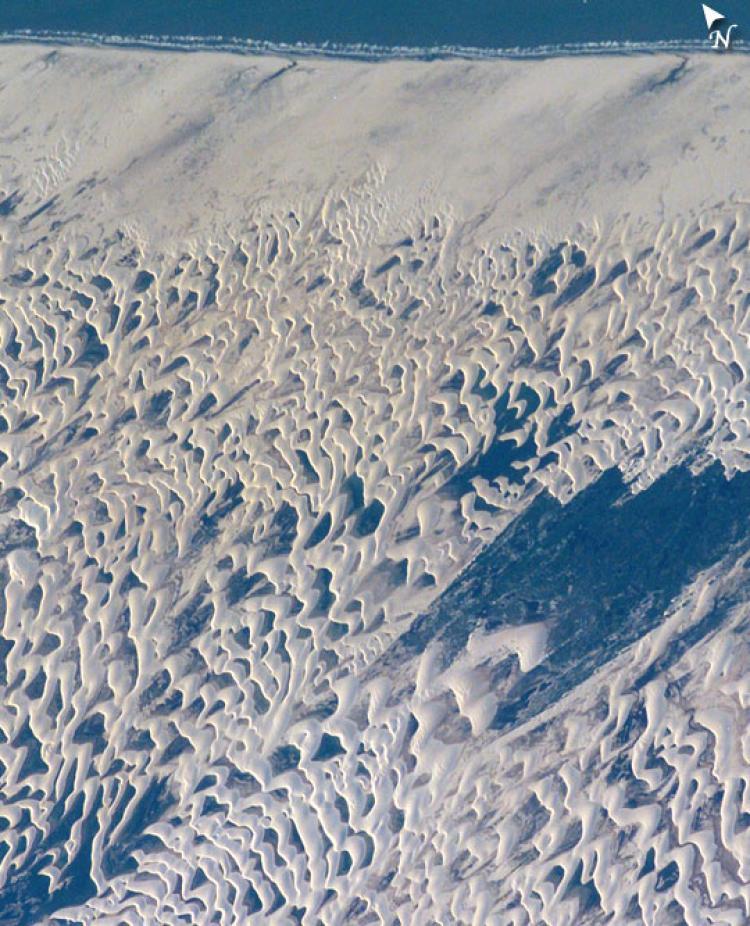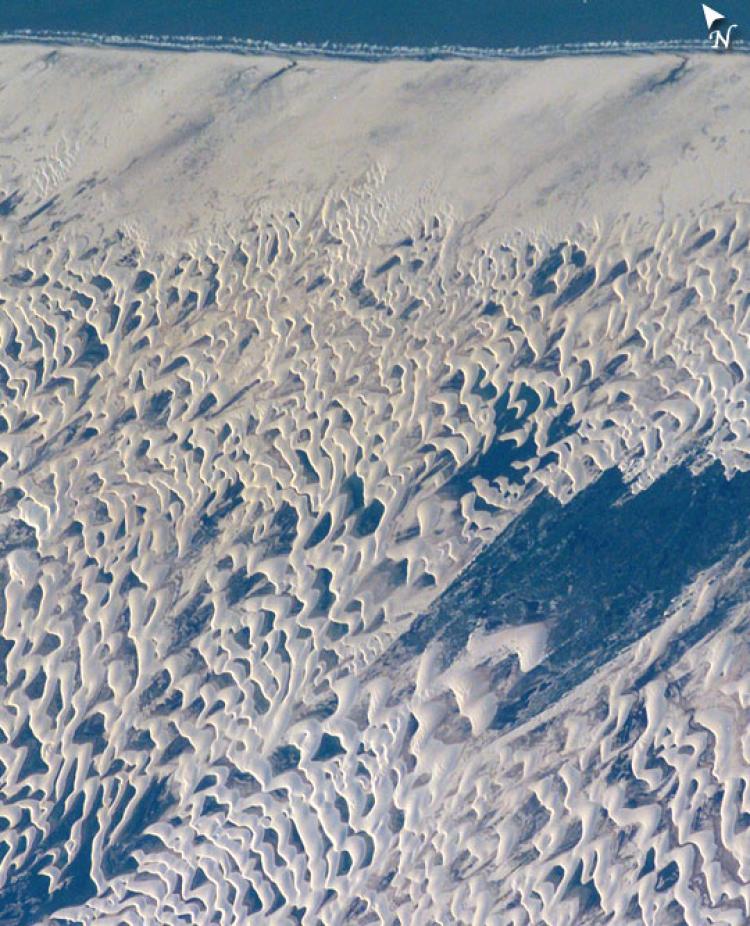In Maranhão, Brazil, resides one of nature’s most spectacular wonders. Imagine wandering the desert dunes under the baking sun. Suddenly you stumble upon the most surreal landscape: swamps, lakes, and lagoons in the middle of the desert! Could this be a mirage?
Located just a few miles from the state capital, Sao Luis, the Lençóis Maranhenses National Park appears at first glance to be a typical desert. Yet if you look closer among the sand dunes, you'll witness the welcome, though unexpected presence of water.
Maranhão state is located in the northeast region of the country and borders the Atlantic Ocean. Its particular geographical conditions make for one of the highest storm ratings among similar deserts: from 40 to over 60 inches of rainfall in a typical year. (Compare this with the Sahara, which can receive less than 4 inches annually).
The result is a truly unusual landscape—a desert fixed with large sources of blue-green water all year. However, the best time to observe these desert lakes is in the months from June to September when they are at their most lush.
Maranhão is abundant with flowing water; the Tocantins, the Gurupi, the Parnaiba, the Pindare, the Mearim, the Itapecuru, and the Turiacu rivers all flow through this region. The Lençóis Maranhenses national park itself lies just outside the Amazon basin. The Maranhão desert was once home to the Caeté Indians, who, according to local folklore, woke up one day to find their village covered in sand.
The park’s lagoons are the delight of swimmers, who come every year to enjoy the incredible landscape and bask in unexpected luxury, but the area isn’t just for the enjoyment of tourists. Year-round inhabitants of the park work as fishermen in the wettest months and seek other employment during the rest of the year.
Despite the splendor of its desert lakes, the economy of the Lençóis Maranhenses (given national park status to protect the unique wildlife) is not based principally on tourism, but on the metal industry and agriculture.
Where water exists, life prospers, and the Maranhão desert—occupying a space over 60 miles long and 30 miles wide—is no exception. Fish, clams, crabs, and turtles are just some of the species that have made homes in the desert swamps during the water-abundant months, but they sometimes disappear in the droughts.
Yet, like in any desert, life returns with every rainfall, fertilizing last season’s buried eggs to produce another generation in the Lençóis Maranhenses.
It’s said that at the border of the desert is the best area in the country for bird watching. Exotic species such as the Masarico, the Blue Marreca, and the Trinta Reis all find their habitat in the region’s large mangroves.
But even if you are not able to spot these birds, you will certainly be enchanted by the unusual beauty of the park itself.
Located just a few miles from the state capital, Sao Luis, the Lençóis Maranhenses National Park appears at first glance to be a typical desert. Yet if you look closer among the sand dunes, you'll witness the welcome, though unexpected presence of water.
Maranhão state is located in the northeast region of the country and borders the Atlantic Ocean. Its particular geographical conditions make for one of the highest storm ratings among similar deserts: from 40 to over 60 inches of rainfall in a typical year. (Compare this with the Sahara, which can receive less than 4 inches annually).
The result is a truly unusual landscape—a desert fixed with large sources of blue-green water all year. However, the best time to observe these desert lakes is in the months from June to September when they are at their most lush.
Maranhão is abundant with flowing water; the Tocantins, the Gurupi, the Parnaiba, the Pindare, the Mearim, the Itapecuru, and the Turiacu rivers all flow through this region. The Lençóis Maranhenses national park itself lies just outside the Amazon basin. The Maranhão desert was once home to the Caeté Indians, who, according to local folklore, woke up one day to find their village covered in sand.
The park’s lagoons are the delight of swimmers, who come every year to enjoy the incredible landscape and bask in unexpected luxury, but the area isn’t just for the enjoyment of tourists. Year-round inhabitants of the park work as fishermen in the wettest months and seek other employment during the rest of the year.
Despite the splendor of its desert lakes, the economy of the Lençóis Maranhenses (given national park status to protect the unique wildlife) is not based principally on tourism, but on the metal industry and agriculture.
Where water exists, life prospers, and the Maranhão desert—occupying a space over 60 miles long and 30 miles wide—is no exception. Fish, clams, crabs, and turtles are just some of the species that have made homes in the desert swamps during the water-abundant months, but they sometimes disappear in the droughts.
Yet, like in any desert, life returns with every rainfall, fertilizing last season’s buried eggs to produce another generation in the Lençóis Maranhenses.
It’s said that at the border of the desert is the best area in the country for bird watching. Exotic species such as the Masarico, the Blue Marreca, and the Trinta Reis all find their habitat in the region’s large mangroves.
But even if you are not able to spot these birds, you will certainly be enchanted by the unusual beauty of the park itself.







Friends Read Free